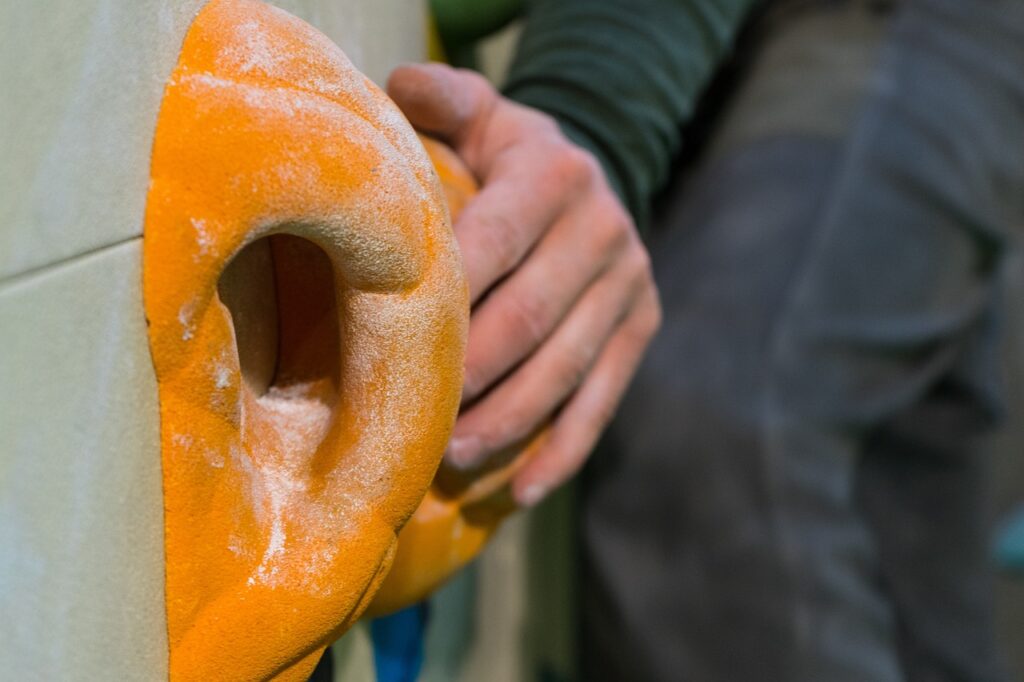Creating mechanical artwork may seem intimidating at first, but fear not! This beginner’s guide will help you navigate the world of mechanical art with ease. From understanding the fundamentals of gears and pulleys to mastering the art of adding intricate details, this guide will provide you with all the essential knowledge and techniques to bring your mechanical creations to life. So grab your sketchpad, sharpen your pencils, and get ready to embark on an exciting journey into the mesmerizing world of mechanical art.
Introduction
Mechanical artwork refers to the creation of aesthetic pieces that incorporate mechanical movements and elements. It combines artistry and engineering principles to produce visually captivating pieces that are also functional. Whether you have a passion for art, engineering, or simply enjoy working with your hands, creating mechanical artwork can be a rewarding and fulfilling hobby. This guide will introduce you to the world of mechanical artwork, highlighting its benefits and providing you with the necessary skills and tools to get started.
What is mechanical artwork?
Mechanical artwork encompasses a wide range of creations, including kinetic sculptures, automata, and mechanical installations. These pieces incorporate mechanical elements such as gears, levers, and pulleys to achieve movement and interactivity. The end result is a visually captivating artwork that engages audiences through its fascinating mechanical motions. Mechanical artwork often requires a conceptual understanding of motion and physics, as well as artistic skills to bring the design to life.

Why should you create mechanical artwork?
Creating mechanical artwork offers a unique blend of artistic expression, creative problem-solving, and hands-on engineering. It allows you to combine your interests in art and technology, satisfying both your desire for aesthetic beauty and the satisfaction of making something functional. Through the process of designing and building mechanical artwork, you can develop a range of valuable skills, such as critical thinking, spatial awareness, and attention to detail. Additionally, mechanical artwork provides an opportunity for self-expression and a platform to communicate your ideas and stories to a wider audience.
What skills and tools do you need?
To create mechanical artwork, you will need a combination of artistic and technical skills, as well as access to specific tools and materials. Here are some of the key skills and tools necessary for creating mechanical artwork:
Skills:
- Basic understanding of mechanics and movement principles
- Proficiency in sketching and design
- Ability to problem-solve and troubleshoot mechanical issues
- Patience and attention to detail
- Basic knowledge of woodworking, metalworking, or other relevant craft skills
Tools and Materials:
- Sketching materials (e.g., pencils, erasers, sketchbook)
- Mechanical drawing instruments (e.g., rulers, compasses)
- Woodworking tools (e.g., saw, drill, chisels)
- Metalworking tools (e.g., files, pliers, soldering iron)
- Adhesives and fasteners (e.g., glue, screws, nails)
- Various materials depending on your chosen medium (e.g., wood, metal, acrylic, fabric)
While having prior experience in art or engineering is beneficial, creating mechanical artwork is a learning process that allows for experimentation and growth. As you continue to develop your skills and expand your knowledge, you may also acquire additional tools and materials to further enhance your creations.

Choosing Your Medium
When starting with mechanical artwork, it’s important to consider the medium or type of artwork that most interests you. Here are a few mediums commonly used in mechanical artwork:
Kinetic Sculptures:
Kinetic sculptures are three-dimensional artworks that incorporate motion as a fundamental element. They can be made from a variety of materials and range in size from small tabletop pieces to large outdoor installations. Kinetic sculptures often feature mesmerizing movements and continually evolving patterns, capturing the viewer’s attention and curiosity.
Automata:
Automata are mechanical devices that mimic human or animal motions. These artworks are often smaller in size and typically built with a specific mechanical purpose. Automata have a long history and can range from simple mechanisms such as a spinning wheel to complex scenes that tell a story through intricate movements.
Mechanical Installations:
Mechanical installations are large-scale artworks that can be interacted with or experienced by multiple people. These installations often incorporate motion, sound, and visual effects to create immersive and captivating experiences. They can be found in public spaces, museums, or galleries, providing a dynamic and engaging display for viewers.
Considering your interests and skills is crucial when choosing your medium. Reflect on what type of mechanical artwork resonates with you and aligns with your current skill set. It’s also important to consider the resources available to you, such as the space you have for creating and displaying your artwork, as well as the tools and materials you have access to.
Understanding Basic Mechanics
To create mechanical artwork, it is essential to have a basic understanding of different types of mechanical movements and how they function. Here are some key concepts to explore:
Gears:
Gears are mechanical components with rotating teeth that mesh together to transmit motion and transmit torque. They can be used to change speed, direction, or force in a mechanical system. Learning about different types of gears, such as spur gears, bevel gears, and worm gears, will allow you to incorporate them effectively into your artwork.
Levers:
Levers are simple machines that consist of a beam or bar and a fulcrum. They help amplify force or change the direction of a force. Understanding how levers work and the different classes of levers will enable you to create mechanisms that efficiently utilize leverage.
Pulleys:
Pulleys are mechanisms that consist of wheels with grooves and a rope or belt. They are used to transmit force and change the direction or magnitude of a force. By learning about different types of pulley systems, including fixed pulleys, movable pulleys, and compound pulleys, you can incorporate these elements into your mechanical artwork.
Principles of Motion:
Understanding the principles of motion, such as Newton’s laws of motion and the concept of inertia, will help you design and build mechanical artwork that moves smoothly and efficiently. Familiarize yourself with concepts such as friction, gravity, and momentum to create artworks that interact with their environment in a realistic and captivating way.
By gaining a solid foundation in basic mechanics, you will be better equipped to design and build mechanical artwork that not only looks visually appealing but also functions correctly and precisely.

Sketching Your Design
Before diving into the construction phase, it is essential to create a detailed sketch of your mechanical artwork. Sketching serves as a visual blueprint, allowing you to refine your ideas and explore different design possibilities. Here’s how to approach the sketching process:
Creating a rough sketch:
Start by sketching a rough outline of your artwork, capturing the basic form and movement you envision. Don’t worry about the details at this stage—focus on getting the overall concept down on paper. Use simple shapes and lines to represent different components and movements.
Refining your ideas with multiple iterations:
Once you have a rough sketch, refine your design by creating multiple iterations. This process involves making adjustments, adding more detail, and experimenting with different arrangements of mechanical elements. Consider how each component interacts with others and how the overall composition fits together.
Considering aesthetics and functionality:
Pay attention to both the aesthetic appeal and functionality of your design. Strive for a balance between visual appeal and the intended mechanical movement. Consider the emotions or ideas you want to convey through your artwork and how its form and movement can effectively communicate them. Incorporate elements that enhance the overall visual impact and align with your artistic vision.
Sketching is an iterative process, so don’t be afraid to make modifications and refine your design until you are satisfied with the final result. Take your time and allow yourself to experiment and explore different possibilities. Once you have a well-developed sketch, you can move on to the next step of bringing your mechanical artwork to life.
Materials and Tools
Choosing appropriate materials and utilizing the right tools are crucial steps in creating mechanical artwork. Here are some considerations for selecting materials and exploring common tools and equipment:
Choosing appropriate materials for your artwork:
The choice of materials depends on factors such as the desired aesthetics, functionality, and your skill set. Common materials used in mechanical artwork include wood, metal, acrylic, and fabric. Consider the properties of each material, such as strength, durability, and workability, to ensure they meet the requirements of your design. Experimenting with different materials can also lead to unique and unexpected outcomes.
Exploring common tools and equipment:
Having the right tools is essential for the successful construction of mechanical artwork. Basic hand tools, such as saws, drills, chisels, and files, are commonly used in woodworking and metalworking. Additionally, specialized tools such as gear cutters or laser cutters may be required for specific components. Consider your budget and the level of complexity in your design when acquiring tools. Start with the basic tools and gradually expand your collection as you gain experience and undertake more intricate projects.
Understanding safety precautions:
Working with tools and materials requires proper safety precautions. Familiarize yourself with the safety guidelines relevant to your chosen materials and tools. Use appropriate personal protective equipment, such as safety goggles, gloves, and respiratory protection, when necessary. Keep your workspace organized and clean, and always follow manufacturer instructions for tools and equipment.
By selecting the right materials and tools and adhering to safety guidelines, you can create a safe and successful environment for constructing your mechanical artwork.
Building the Base Structure
The base structure of your mechanical artwork serves as the foundation, providing stability and support for the moving components. Here are some steps to consider when building the base structure:
Creating a sturdy foundation for your artwork:
Start by planning and constructing a robust foundation that can withstand the weight and movements of your artwork. Depending on the size and complexity of your design, you may use a variety of materials, such as wood, metal, or a combination of both. Ensure the structure is adequately reinforced and securely fastened to prevent any instability during operation.
Using proper techniques for assembly:
Utilize appropriate assembly techniques for joining different components of your base structure. This may include techniques such as woodworking joints, metal welding, or using fasteners and glues. Ensure that the connections are secure and provide ample strength to support the mechanical elements and the weight of the artwork.
Ensuring stability and balance:
Maintain stability and balance in your artwork by evenly distributing weight and ensuring proper alignment of the mechanical components. Consider the center of gravity and how it may shift during movement. Incorporate counterweights or additional supports if needed to achieve optimum stability.
Taking the time to build a sturdy and well-balanced base structure is crucial for the overall success of your mechanical artwork. It provides a solid framework that allows the mechanical elements to operate smoothly and reliably.
Incorporating Mechanical Elements
Integral to mechanical artwork are the mechanical elements that bring motion and interactivity to your creation. Here are some considerations when incorporating these elements:
Integrating gears, levers, and other mechanisms:
Determine how different mechanical elements, such as gears, levers, and pulleys, can be integrated into your artwork to achieve the desired movements. Identify the points where these components will interact and collaborate, ensuring that they fit coherently within the design.
Understanding how each component interacts:
Learn about the specific interactions and functions of each mechanical component within your artwork. For example, gears with different gear ratios can create different speeds or torque, while levers can magnify or redirect forces. Understand how each element contributes to the overall motion, and adjust their configuration until the desired movement is achieved.
Testing and adjusting the mechanical elements:
Regularly test and adjust the mechanical elements to ensure they work as intended. Identify any issues such as friction, misalignment, or jams and make necessary modifications. It may require trial and error, but persisting through these adjustments will lead to a well-performing and visually engaging mechanical artwork.
By carefully integrating and refining the mechanical elements within your artwork, you can create mesmerizing movements that capture the imagination of viewers.
Adding Decorative Features
In addition to the mechanical components, adding decorative features can enhance the overall visual appeal of your artwork. Here are a few considerations when incorporating decorative elements:
Enhancing the aesthetics of your artwork:
Consider how visual elements such as colors, patterns, textures, or surface finishes can enhance the aesthetic appeal of your artwork. Choose a color palette that complements the overall design and evokes the desired emotions or themes. Experiment with different finishes such as paints, stains, or varnishes to further enhance the visual impact.
Choosing suitable embellishments:
Integrate suitable embellishments, such as engravings, cutouts, or ornamental details, into your artwork. These decorative features can add depth and intrigue to your design, providing additional visual interest that complements the mechanical movements.
Balancing functionality and visual appeal:
Strive for a harmonious balance between functionality and visual appeal. While decorative features add beauty to your artwork, ensure they do not hinder or obstruct the functioning of the mechanical elements. Consider how these elements can work together seamlessly to create an engaging and cohesive artwork.
The addition of decorative features is an opportunity to infuse your artistic vision into your mechanical artwork, making it a unique and captivating creation.
Finishing and Polishing
Once the construction and integration of mechanical and decorative elements are complete, it’s time to refine your artwork. Here’s how to approach the finishing and polishing phase:
Sanding and smoothing the surfaces:
Begin by sanding and smoothing the surfaces of your artwork to create a uniform and polished appearance. Start with coarse sandpaper and gradually progress to finer grits to remove any rough edges, imperfections, or blemishes. Pay attention to detail and ensure all surfaces are smooth and clean.
Applying paints, stains, or coatings:
Depending on your design and aesthetic preferences, apply paints, stains, or coatings to enhance the visual appeal and protect the surfaces of your artwork. Use suitable primers, paints, or finishes that are compatible with the chosen materials. Apply multiple thin coats, allowing adequate drying time between each layer, for a professional and durable finish.
Adding final touches and details:
Take this opportunity to add any final touches or details that elevate the overall presentation of your artwork. This may include attaching small embellishments, adding subtle accents, or fine-tuning the movements for optimal performance. Pay attention to even the smallest details, as they contribute to the overall impression of your mechanical artwork.
By dedicating time to the finishing and polishing stage, you can transform your raw creation into a refined and visually stunning artwork.
Troubleshooting and Maintenance
To ensure the longevity and optimal performance of your mechanical artwork, it is important to be proactive in troubleshooting and performing regular maintenance. Here are some key aspects to consider:
Identifying and resolving common issues:
Mechanical artwork may encounter various issues over time, such as misalignment, wear and tear, or inadequate lubrication. Regularly inspect your artwork and identify any potential problems. Troubleshoot and resolve these issues promptly to prevent further damage or disruptions to the mechanical movements. Familiarize yourself with common issues and their respective solutions, or seek guidance from experienced makers or artists when needed.
Performing regular inspections and maintenance:
Establish a routine of inspecting and maintaining your mechanical artwork. This may include cleaning components, ensuring proper lubrication, or tightening loose connections. Regularly test the functionality and movement of your artwork to detect any abnormalities or irregularities. By staying proactive in maintenance, you can address potential problems early and prolong the lifespan of your artwork.
Keeping your artwork in optimal condition:
Store and display your artwork in suitable conditions to preserve its quality and prevent damage. Protect your artwork from excessive humidity, temperature fluctuations, or direct exposure to sunlight, as these factors can affect the materials and mechanical components. Follow proper handling instructions when moving or transporting your artwork, ensuring it is protected from bumps or impacts.
By actively troubleshooting and maintaining your mechanical artwork, you can enjoy it for years to come and continue to share its wonder with others.
Creating mechanical artwork offers a unique and fulfilling opportunity to merge artistry and engineering principles. Through exploring different mediums, understanding basic mechanics, sketching your design, selecting appropriate materials and tools, building a sturdy base structure, incorporating mechanical elements, adding decorative features, finishing and polishing, troubleshooting, and performing regular maintenance, you can embark on a journey of self-expression and storytelling. So go ahead, let your creativity soar, and create mesmerizing mechanical artworks that captivate the eyes and ignite the imagination!

